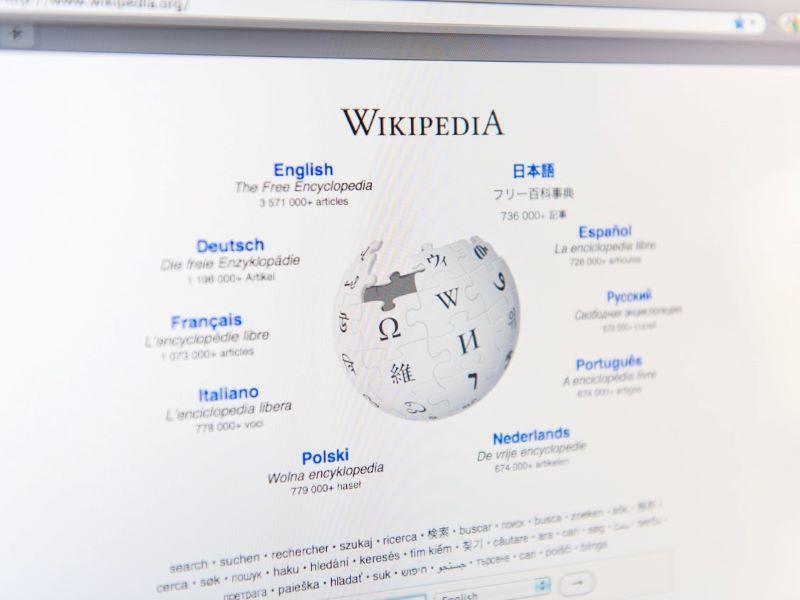
Student-led knowledge exchange using Wikipedia

Wikipedia as a way to facilitate student-led knowledge exchange
A course learning goal in our public administration course is to facilitate student-led knowledge exchange by expanding public access to information and resources on this subject. Student groups are asked to focus on a topic such as Hong Kong’s government, institutions or public policy, then either create a new Wikipedia entry, fix an inaccurate or incomplete entry or expand a subsection under a long entry.
This resource explains how we structure and guide this process to ensure quality learning outcomes and Wikipedia entries.
Introducing Wikipedia
Students may have no prior knowledge or opinions about Wikipedia so an introduction to what it is, how it works and how to build a Wikipedia article is needed. Present the basic guidelines to writing a Wikipedia article and run through each step. Wikipedia itself presents 10 helpful rules to guide contributors:
Rule 1: Register an account
Rule 2: Learn the “five pillars”
Rule 3: Be bold, but not reckless
Rule 4: Know your audience
Rule 5: Do not infringe copyright
Rule 6: Cite, cite, cite
Rule 7: Avoid self-promotion
Rule 8: Share your experience, but don’t argue from authority
Rule 9: Write neutrally and with due weight
Rule 10: Ask for help
Be explicit about Wikipedia’s five pillars:
- Wikipedia is an encyclopaedia
- Its content is written from a neutral perspective
- It is free content that anyone can use, edit and distribute
- Wikipedia’s editors should treat each other with respect and civility
- Wikipedia has no firm rules
And finally, highlight the common mistakes to be aware of and what to avoid, such as:
- Articles about yourself, and things or persons connected with you – in other words, a personal research project
- Advertising
- Attacks on a person or organisation
- Personal essays or original research
- Non-notable topics
- A single sentence or simply a website link
Present a model Wikipedia entry – perhaps one contributed by the previous year’s cohort – and ask students to evaluate it, listing what is useful and what is missing. It is also worth presenting annotated entries to show how existing content can be improved and updated in line with the guidelines above. All this should give students a contextual and tactical understanding of how to contribute.
Preliminary research and reflection
First, students should search Wikipedia to see if the topic they wish to develop, which will vary between different programmes, already has a Wikipedia entry.
If yes, students need to check whether the existing entry can be extended and consider what could be done to improve it. Having assessed the gaps and limits of the current entry, students should draft a plan to address these. To help students develop their plans, ask them to explore entries with a comparable focus outside Hong Kong. They can then use the strong entries as a reference on the scope, design and quality of research when building their own.
If no, they must consider whether the topic is notable, so whether it has been the subject of publication in reliable, secondary and independent sources, so they can gather the references needed to increase the reliability of their information. Ask students to ensure there is enough information to warrant a new entry of a certain length and breadth.
In-depth research and preparation
Once students have a confirmed topic and outline, the research begins. Guide students to gather and collate varied information through the careful and systematic study of diverse resources. It is worth suggesting some good references as a starting point for students to then dig further into the topic. They should look on and offline at primary and secondary sources, public sources and archives, using search engines and databases. Ask students to share some of their references with you and explain why they are credible and what contributions they make towards the entry.
Students will need to read, digest and summarise a large body of material and make choices about what to include, summarise or cut to make sense of the subject. To help, ask students to articulate and develop stories and narratives from the information and sources they uncover. This avoids the temptation to simply compile a long list of information. The students can then group their information under thematic headings to guide potential readers.
Unlike academic writing, Wikipedia posts are not a forum for opinion or argument. Students need to present information in an objective and factual manner, citing credible and reliable sources. To improve students’ ability to critically analyse and identify trustworthy information, introduce them to some helpful tools such as the CRAAP test:
Currency: The timeliness of information – when was it published, revised or updated?
Relevance: The importance of the information for a specific need – does it relate to your topic or answer your question?
Authority: The source of the information – who is the author, publisher or sponsor and what are their credentials?
Accuracy: The reliability, trustworthiness and correctness of the content – where does the information come from and is it supported by evidence?
Purpose: The reason the information exists – is it to inform, teach, sell, entertain or persuade?
Regular consultation and discussion
If you are teaching a relatively large class of 80-plus students, break it up into smaller groups of four or five then host regular consultations with each group to provide useful and tailored feedback. This enables any issues to be raised and addressed quickly, helping keep students on track. Common stumbling blocks to look out for include:
- Students often have a few topics in mind and struggle to decide which one to work on
- Students find a lot of information but struggle to narrow the scope and make it manageable for the presentation
- Students lift information straight from its source, without proper paraphrasing
- Students may rely too heavily on academic articles, making the entry read like an essay rather than a Wikipedia entry
Regular meetings also aid engagement with the assignment by giving students a space to share and discuss their ideas with one another. As a group assignment, the Wikipedia entry should foster peer learning as students support one another with feedback and constructive suggestions.
In-class presentation and written submission
Having completed their initial Wikipedia drafts, the student groups draw on what they have learned during the process of researching and writing Wikipedia entries to give short, 10-minute PowerPoint presentations in front of the whole class.
Encourage students to discuss their entries with reference to the “typical” user searching for information on Wikipedia, such as what their core information needs would be regarding the topic; what evidence or reason students have for identifying these needs; how their Wikipedia entry meets these needs and what could be done to further develop their contribution. These guiding questions help students reflect on their own and others’ contributions.
Follow each presentation with a question-and-answer session, enabling student groups to gather constructive feedback from the class, identify any ambiguities and incorporate comments and suggestions into their final submission.
Once submissions are completed, we ask the university research assistants to input the work into Wikipedia so students can see the tangible results of their hard work.
Adrian Man-Ho Lam is a course tutor in the department of politics and public administration at the University of Hong Kong.
If you found this interesting and want advice and insight from academics and university staff delivered directly to your inbox each week, sign up for the THE Campus newsletter.


